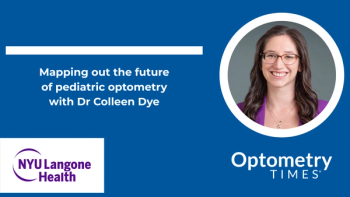
Study reveals eye pain as leading cause of outpatient and ED visits in US
Estimating the number of such visits in the US may help guide research and clinical efforts to optimize outcomes, according to the researchers.
Investigators from the University of Michigan Medical School, Ann Arbor, reported that eye pain is the most frequent reason patients presented to ophthalmologists and emergency departments (EDs),1 according to first author Jeremy N. Shapiro, BA, from the Department of Ophthalmology and Visual Sciences.
The authors explained that estimating the number of such visits in the US may help guide research and clinical efforts to optimize outcomes.
Shapiro and his team conducted a retrospective cross-sectional study of data from the National Ambulatory Medical Care Survey and National Hospital Ambulatory Medical Care Survey (2008-2019) to analyze a population-based sample of visits to outpatient clinics and EDs. The study included patients presenting with eye pain.
The data analysis showed that during the study period, there were 4.6 million outpatient and 1.0 million ED annual visits in which patients presented with eye pain visits.
More women than men presented to an outpatient visit (63.2%) and they were over 60 years of age (46.6%).
Men presented to the ED more often (51.8%)and they were younger than 45 years (aged <15 years, 16.4%; 15-24 years, 19.2%; and 25-44 years, 35.6%).
For almost half of the outpatient eye pain visits, the presenting complaint was considered nonacute. Eye pain was the primary reason for the visit in 42.0% of outpatient visits and 66.9% of ED visits, the authors reported. Eye pain was the only reason for the visit in 18.3% of outpatient and 32.7% of ED visits.
Ophthalmologists evaluated the largest number of outpatient visits (45.3%). The primary diagnoses were non–vision-threatening for most outpatient (78.5%) and ED (69.9%) visits when eye pain was the primary reason for the visit. The vast majority of patients (89.4%) in both settings had a follow-up visit scheduled.
Considering these results, the authors suggested, “Expanding therapeutic approaches to treat the causes of eye pain may reduce the burden on the health care system and optimize outcomes.”
Reference:
Shapiro JN, Abuzaitoun RO, Pan Y, et al. Health care use for eye pain. JAMA Ophthalmol.2024;142:655-660. doi: 10.1001/jamaophthalmol.2024.1808
Newsletter
Want more insights like this? Subscribe to Optometry Times and get clinical pearls and practice tips delivered straight to your inbox.



















































.png)


